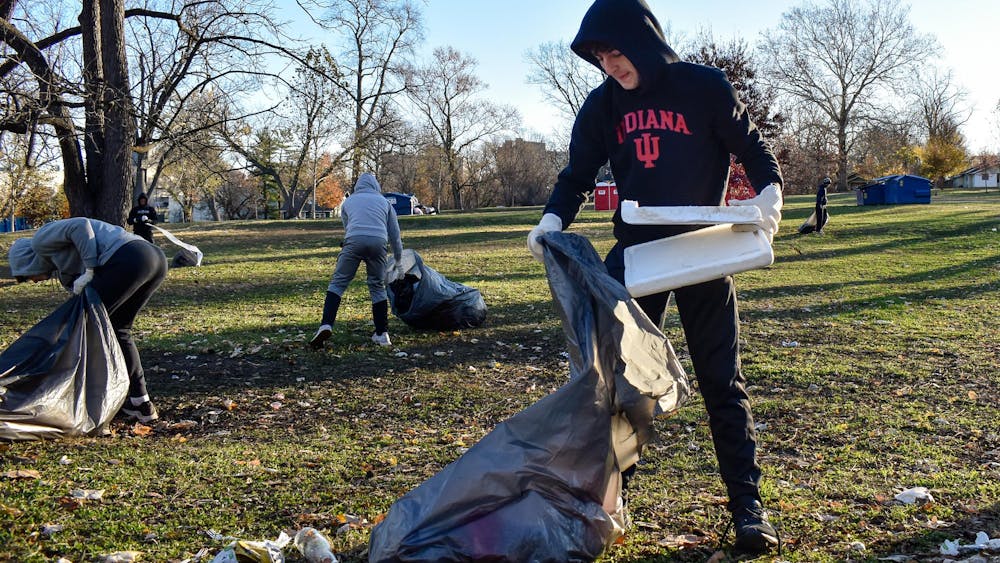Many universities, including IU, have programs that offer inmates in correctional facilities the opportunity to get a college degree. IU, however, only offers inmates distance learning courses, which are taught through mail correspondence.\nIncarcerated students taking classes through IU might have a more difficult time than those taking classes through universities that provide on-site instruction for inmates because there is no face-to-face interaction between teachers and students. Also, students taking classes through the IU program must fund their own education because only students who take on-site courses full-time are eligible for state grants, said Roy Durnal, the senior associate director of financial aid at IU. \nAt IU, Indiana residents taking distance courses pay $145.06 per credit hour, and non-Indiana residents pay $164.22 per credit hour, said Lisa Denlinger, executive director of marketing and communication for IU’s School of Continuing Studies.\nPurdue University, Ball State University and Indiana State University, among others, provide on-site instruction for inmates at various correctional facilities around the state, according to information from the Indiana Department of Correction. Those students would be eligible for state grants, but most incarcerated students taking correspondence courses from IU must rely on their families to pay for classes, said John Nally, the director of education for the Department of Correction.\nJoanna Wallace, associate dean for the School of Extended Education at Ball State University, through which Ball State conducts its correctional education program, said most incarcerated students taking classes through the program are full-time students who receive financial assistance from state grants. Wallace said the university has a little more than 100 faculty members who teach in the correctional facilities, most full-time. Having teachers on-site allows for more control of exactly how courses are taught, she said. It also allows for more consistency between the classes on the Ball State campus and those in the state correctional facility in Michigan City, Ind., and five correctional facilities where Ball State has programs for incarcerated students.\nDaniel Callison, dean of IU’s School of Continuing Studies, said he has not ruled out the possibility of having talks about incorporating elements of on-site instruction into IU’s education programs at correctional facilities.\n“Our school should consider in its future activities and future plans ways in which we can cooperate more and work more with Purdue, Ball State and other academic institutions to undergird and work with that kind of face-to-face delivery,” Callison said.\nHe said IU could “probably provide elements of online delivery” that could be used with other schools’ on-site programs.\nBut Nally said he’s still happy with the role IU is playing in the education system in the Department of Correction. IU’s correspondence program makes it easy for inmates to take a few classes required for a degree, he said. \nHe also said IU’s School of Continuing Studies has been receptive to transfer credits, making it easier for inmates to continue to work toward a degree without losing credit hours if the inmate transfers from an on-site program to IU’s program.\nRichard White, a 46-year-old inmate, is almost finished with his IU bachelor’s degree. Almost as soon as White completes his degree – he has five courses left – and receives the two-year time cut off his sentence that accompanies it, he will be free to leave the facility. Because mail must be checked on the way in and out of the facility, the process is slow, and he uses the extra time to think about life after incarceration. He said that when he goes home, he wants to become a counselor for troubled youth, because he knows from personal experience what they’re going through. He said he blamed himself for a lot of problems he saw in his family growing up and doesn’t want other kids to feel the same way. \nHis mother, Norma Doyle, said she would like to see him help kids, as well. She sometimes brings her granddaughter to see him at the Westville Correctional Facility, and she said they get along well.\n“I take my granddaughter up there all the time, and he’ll tell her, ‘Marissa, anything that happens with your mother or your father – never think that it’s your fault because it’s not,’” Doyle said. (Because she’s a juvenile, Marissa’s name has been changed to protect her identity.) “I mean, he is just so good with kids, and I believe counseling would be a good thing for him.”\nDoyle said White isn’t the only one anticipating his homecoming – Marissa is too.\n“She loves him,” Doyle said. “She’ll just sit, and they read together, or if she gets nervous she bites her nails, and he tells her about all the germs underneath her fingernails. He just keeps her occupied and keeps talking to her, and telling her, ‘When Uncle Dickie gets home, it’s going to be a lot better for you, and if you ever need to talk about anything, you can always talk to Uncle Dickie.’”\nDonna Cummins is the institutional teacher at Westville, and part of her duty includes coordinating the IU correspondence program at the facility. She said White was helpful when she began her job at the facility, making a chart for her that shows how many credits students need to complete various degrees, to which she still frequently refers.\n“He’s really come a long way,” Cummins said about White. “I could be wrong, but I don’t think that he’ll be back.”\nBut for now, White continues to wait for his lessons. In doing so, he is also waiting for the day when he will walk through the gates into the parking lot. He will climb into a car. And then, as an ex-inmate – but also as a college graduate – he will finally go home.
IU might consider pairing with schools to teach inmates on-site
Get stories like this in your inbox
Subscribe





